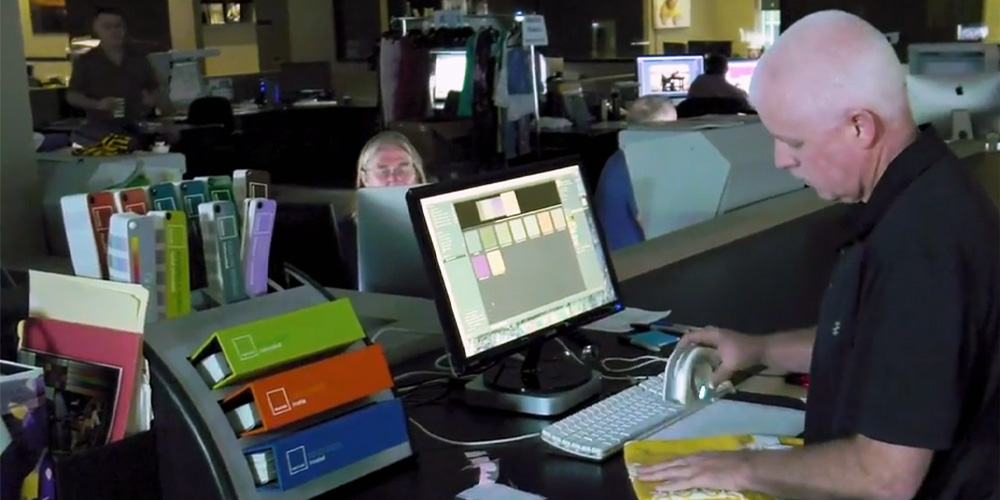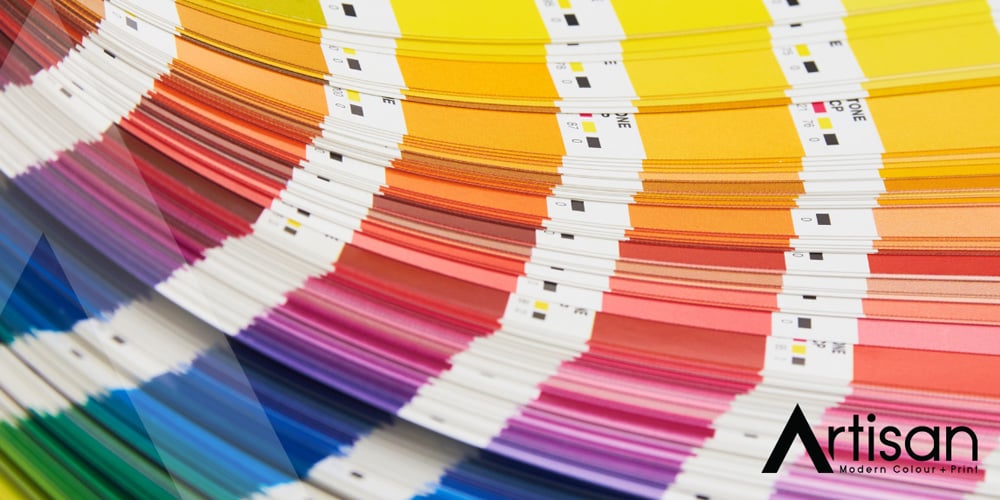Top 4 Questions to Ask Your Commercial Printer

Businesses work with commercial printing companies all the time to print a variety of collateral. But how do you know which commercial printing solutions are best? Or what information to share with them to ensure your job goes off without a hitch?
Today, we’re sharing four questions to consider and ask your commercial printer. They will help you; they will help them; and they will help your project come out just as expected.
1. Should I Go With Offset Printing or Digital Printing?

When it comes to your printing project specifications, your commercial printer will have two options: offset printing or digital printing.
Offset printing uses plates: Think of an old-school printing press and you’ll be going in the right direction.
Digital printing uses toner or liquid ink, no plates.
If you need a quick turnaround, digital will usually serve you best. It is great for shorter print runs and when the print pieces have variable data. Offset printing is better for larger print runs and provides the Pantone Matching System, so the color will be exactly what you need to support your brand.
In the commercial printing industry, there are many different types of printing methods available. However, the vast majority of print products you see will be either offset or digital because they are the most cost-effective while offering the best quality. A few key differences to understand between offset and digital printing include:
- Printing Process: Offset printing uses traditional printing methods, using plates and drums that impress the print onto the paper while digital prints use toners that are applied to the paper.
- Cost: Offset printing is cheaper at volume compared to digital printing which is better for one-off or smaller runs.
- Print Quality: From a fidelity standpoint, offset printing can produce higher-quality prints, though for most applications the digital quality is fine.
- Printing Paper Options: Because digital printers need to have paper fed into it and processed, it’s limited in the paper options whereas offset printing has a greater variety of sizes and textures available.
- Printing Time: Digital printing is a faster process as it can mostly be prepped and printed from a computer with the right type of high-end printer.
- Customization: Aside from paper options, digital printing has more customization options because of the variety of printers and inks available.
2. Which Type of Paper Should I Use?
The paper you choose for your commercial printing project will be greatly influenced by what you’re printing and how you’re using it. There are plain, coated, synthetic, premium, and recycled papers, as well as varying weights.

Some options include:
- Uncoated text – Does not have any coating or finish applied to its surface, and has a more natural, tactile feel and appearance compared to coated papers.
- Coated text – Can be gloss or matte, has been treated with a coating or finish, typically made of clay or other compounds.
- Uncoated cover – Also known as cardstock or card paper, refers to a type of paper without a coating or finish applied to its surface but is thicker than regular text-weight paper.
- Coated cover – Can be gloss or matte, it’s just like the coated text paper but much thicker and sturdier.
- UV coating – Paper that has been treated with a special coating and then cured using ultraviolet (UV) light, this will protect the print from UV light.
- Aqueous coating – A water-based coating is applied to paper that increases image quality and provides extra protection.
It’s definitely a lot to consider! The best commercial printers will walk you through this process and discuss your project to ensure your paper is a great fit for what you’re printing. Your commercial printing expert should be asking you questions like:
- How important is print quality? – You may be able to spend less on paper if the need for image quality isn’t paramount.
- How important is durability? – Without the need for durability or smudge-proofing, paper can be left untreated and without coatings.
- How eco-friendly is the paper? – Because of the processes and chemicals used in production, some paper is more eco-friendly than others.
3. In What Format Do You Need the Design?
There are many considerations when it comes to preparing and delivering your design to your commercial printer. Hopefully, you are working with a graphic designer who is familiar with print requirements and can manage the conversation. If not, here are some things you’ll need to consider:
- Resolution of the artwork
- Color: CMYK or Pantone
- Crop marks and bleeds
- File type
Also, be sure you have a quality assurance (QA) system in place. There’s nothing worse than sending a job to print only to have it delivered and find an error. These can be costly and time-consuming. Remember that a high-volume commercial printer won’t have the bandwidth to manage QA on its end, so you need to take on that responsibility.
4. How Will I Receive Proof?
Some commercial printing companies provide digital proof, while others will offer physical proof. Unless you are on a very tight deadline, you should always take the time to receive and review the proof—regardless of which option is better. Remember, this is another part of the QA process.
Digital proofs are fast and easy, arriving to you via PDF in most cases. For the majority of projects, these are sufficient.
However, for some projects, such as catalogs, magazines, or brochures, you may want physical proof. These will allow you to ensure colors are true and see how the piece folds or looks as it is distributed.

If you request a physical proof, be sure to work that printing process into your timeline.
Artisan Color combines modern print technology with over 25 years of experience to partner with our clients through every step of the process. As your print marketing partner, we are committed to providing you with the quality print services you need to properly represent your brand. Artisan Color offers large- and small-format printing, pre-press, product management and print technology, an in-house photo studio and creative services for one-stop service.






